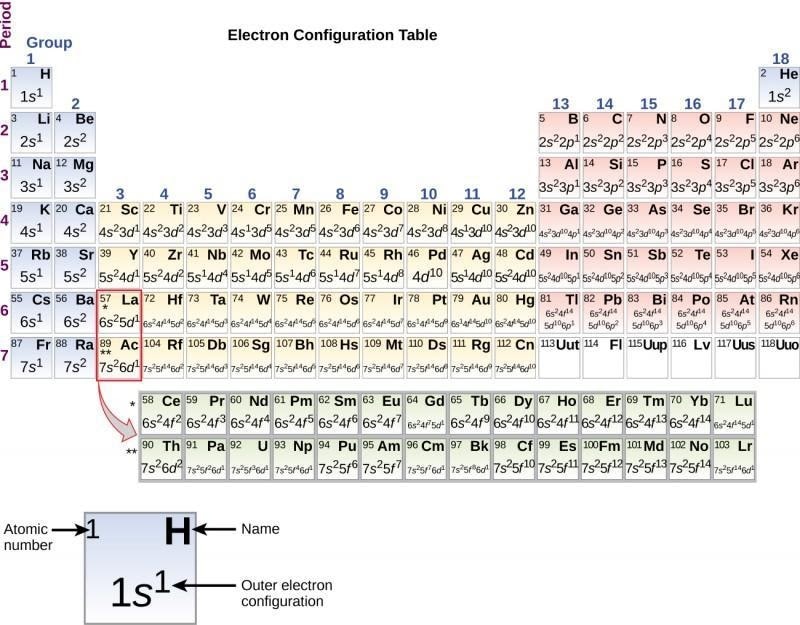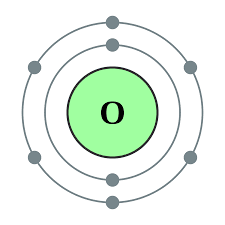Electron Configuration - Meaning, Definition, Rules, Table, FAQs
What is Electronic Configuration?
Electron configuration definition and electron configuration meaning: An atom's electron configuration is a depiction of the distribution of electrons among the orbital shells and subshells. The electronic configuration of elements is commonly used to describe an atom's orbitals in its ground state, but it may also be used to depict an atom that has ionised into a cation or anion by compensating for electron loss or gain in succeeding orbitals. Many of an element's physical and chemical features can be linked to its unique electron configuration. The distinctive chemistry of the element is determined by the valence electrons, which are electrons in the outermost shell.
The electrons, on the other hand, are those that exist beyond the nucleus of the atom, and their precise distribution within the atom is crucial in directing the chemical reactions that the atom is involved in. The precise distribution of electrons in an atom is defined by its electronic configuration of all elements, and this distribution aids in understanding the reasons for chemical events that the atom or its associated molecules are involved in.
Also read -
Electron configuration periodic table:
The elements are organised into columns based on their atomic number (number of protons in the nucleus). Elements with comparable chemical characteristics are grouped together. The periodic table's form resembles the filling of subshells with electrons. The s subshells are occupied in the first two columns on the left side of the periodic table. Similarly, the p block represents the periodic table's right-most six columns, the d block represents the periodic table's middle ten columns, and the f block represents the 14-column area that is generally shown as separate from the main body of the periodic table.

Energy levels:
Energy levels are defined as fixed distances in which electrons rotate around the nucleus with a defined amount of energy. With increasing distance from the nucleus, the energy associated with a given energy level rises. In 1s hydrogen energy levels with electronic configuration formula 1s1, the hydrogen electron configuration atom has only one electron. However, readers may find it challenging to recall the electron energy levels diagram for many electrical combinations.
Shell and ‘n’ value | Max. electron in electron configuration |
K shell, n=1 | 2×21=2 |
L shell, n=2 | 2×22=8 |
M shell, n=3 | 2×23=16 |
N shell, n=4 | 2×24=32 |
The placement of electrons in electron orbitals around the nucleus of atoms follows a set of laws. 2n2, where n is the major quantum number, is the maximum number of electrons in the main energy levels. The maximum number of electrons in subshell orbitals such as the s, p, d, and f orbitals = 2(2l+ 1). For the s, p, d, and f orbitals, l = 0, 1, 2, 3. Where l is the azimuthal quantum number. As a result, the s, p, d, and f energy levels each have a maximum of 2, 6, 10, and 14 electrons.
Related Topics link |
Principle Quantum number value | Value of Azimuthal quantum Number (l) | Subshell |
n=1 | l=0 | 1s |
n=2 | l=0 l=1 | 2s 2p |
n=3 | l=0 l=1 l=2 | 3s 3p 3d |
n=4 | l=0 l=1 l=2 l=3 | 4s 4p 4d 4f |
Notation: Subshell labels are used to represent an atom's electron arrangement. The shell number (determined by the primary quantum number), the subshell name (determined by the azimuthal quantum number), and the total number of electrons in the subshell are all listed in superscript on these labels. For instance, if two electrons are occupied in the first shell's's' subshell, the resultant notation is '1s2.'The electron configuration of magnesium (atomic number 12) can be expressed as 1s2 2s2 2p6 3s2 using these subshell labels.
Read more :
- NCERT notes Class 11 Chemistry Chapter 3 Classification of Elements and Periodicity in Properties
- NCERT solutions for Class 11 Chemistry Chapter 3 Classification of Elements and Periodicity in Properties
- NCERT Exemplar Class 11 Chemistry Solutions Chapter 3 Classification of Elements and Periodicity in Properties
Rules for filling orbitals in Electron Configuration Chart:
Aufbau Rule: The term "Aufbeen" comes from the German word "aufbauen," which means "to build up." According to the Aufbau principle, electrons will first occupy lower-energy orbitals before moving on to higher-energy orbitals. The sum of the primary and azimuthal quantum numbers is used to compute the energy of an orbital. Electrons are filled in the following order according to this principle: 1s, 2s, 2p, 3s, 3p, 4s, 3d, 4p, 5s, 4d, 5p, 6s, 4f, 5d, 6p, 7s, 5f, 6d, 7p.

It's worth noting that the Aufbau principle has many exceptions, such as chromium and copper. The stability afforded by half-full or entirely filled subshell electronic configurations can occasionally explain these exceptions.
Pauli exclusion principle: According to the Pauli exclusion principle, an orbital can only hold a maximum of two electrons with opposite spins. “No two electrons in the same atom have the same values for all four quantum numbers,” says this principle. As a result, if two electrons have the same primary, azimuthal, and magnetic numbers, they must have opposite spins.
Hund’s Rule: This rule specifies the order in which electrons are filled in all of a subshell's orbitals. It asserts that before a second electron is inserted in an orbital, every orbital in a particular subshell is single-occupied by electrons. The electrons in orbitals with only one electron have the same spin in order to maximise the total spin (or the same values of the spin quantum number).
Related Topics link |
Example: the electronic configuration is 1s22s22p3, it can be represented using hund’s rule as:

Hydrogen electron configuration:
Hydrogen has an atomic number of one. As a result, a hydrogen atom has one electron, which will be placed in the first shell's subshell. Hydrogen has a 1s1 electron configuration, as seen below.

Oxygen electron configuration:
The atomic number of oxygen is 8, which means it has eight electrons. The following is the order in which its electrons are filled:
2 electrons in the K shell
6 electrons in the L shell
As a result, the electron configuration of oxygen is 1s22s22p4, as illustrated in the diagram below.

NCERT Chemistry Notes :
Noble gas electron configuration:
Element | Electronic configuration |
Helium | 1s2 |
Neon | [He]2s22p6 |
Argon | [Ne]3s23p6 |
Krypton | [Ar]3d104s24p6 |
Xenon | [Kr]4d105s25p6 |
Radon | [Xe]4f145d106s26p6 |
Oganesson | [Rn]5f146d107s27p6 |
Also check-